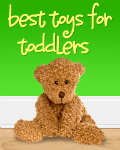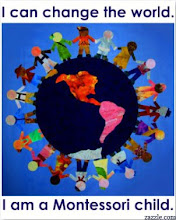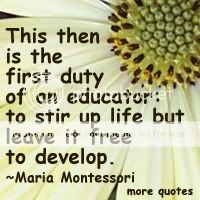
Brojevne gredice su prvi matematički pribor s kojim se djeca susreću u Montessori grupi. Pomoću njih djeca taktilno i vizualno percipiraju količinu od 1 do 10, te uče redoslijed od 1 do 10. Svaka gredica označava jedan broj.
Pribor se sastoji od 10 drvenih gredica - najmanji broj, jedan, ima 10 cm, a najveći broj, deset, ima 1 m. Brojevne gredice se razlikuju od crvenih gredica (iz senzomotorike) po tome što su naizmjenično obojani u crvenu i plavu boju (10 cm crvena boja, 10 cm plava boja itd.).
Djeca s ovim priborom počinju raditi s cca 4 godine.
U slučaju jako slabovidne ili čak slijepe djece preporučuju se glatko-hrapave gredice kako bi ih dijete lakše opipom razlikovalo ili pak brojevne gredice s velikim kontrastom između boja (npr. gredice su žuto-plave).
~
Number rods are first math material that children face in Montessori classroom. They allow children tactile and visual perception of the amount of 1-10, and learn the order of 1-10. Each rod means single number.
Material consist of 10 wooden rods - the smallest number, one, is 10 cm, while the biggest number, ten, is 1 m long. Number rods differ from red rods (sensorial): they are painted in alternating red and blue (10 cm red, 10 cm blue, etc.).
Children starting to work with this equipment with about 4 years.
In the case of very impaired or even blind children are recommended smooth-rough rods, which is easier to differ, or number rods with a high contrast between the colors (eg. yellow and blue rods)
Brojevne gredice se do tepiha nose na isti način kao i crvene gredice (postupak nošenja je objašnjen u postu o crvenim gredicama).
Kad crvene gredice donosimo na tepih, polažemo ih bez nekog reda.
~
We carry the number rods to the mat in the same way as the red rods (the carrying procedure is explained in post about red rods).
When we bring the red rods on the carpet, we lays them on the carpet strewn:
Kad su sve gredice na tepihu, slažemo ih po dužini - od početka tepiha (počinjemo s najdužom gredicom uz gornji rub tepiha. Ostale slažemo nakon nje, prema sebi). Djetetu treba reći da se preko brojevnih gredica ne prelazi dlanom kao preko crvenih gredica jer uz ovaj pribor ne očimo o dužini, učimo brojeve. Zbog toga bi bilo dobro da prvu (ili prve dvije) gredicu slaže odgojitelj, a ostale može dijete.
Također je bitno da je crveni segment svih gredica uvijek s lijeve strane.
~
When all the red rods are on the carpet, we put them by the length from the beginning of the mat (start with the longest red rod along the upper edge of the carpet. We put other upon it, to ourself). The child must be said thad we do not cross with our palm along the entire length of number rods, because with this material we don't learn about the length, we learn the numbers. Therefore, it would be good if the first (or first two) number rods put teacher, other rods can put a child.
It is also important that the red segment of all the number rods is always on the left.
Kad su sve gredice složene, provodimo lekciju u tri stupnja:
When all the number rods are complex, we are implementing a three period lesson:
1.
Izdvajamo tri najkraće gredice i s punim dlanom obuhvatimo najmanju brojevnu gredicu - kažemo "Jedan". Dijete, ako želi, ponavlja za nama (nakon svake gredice). Zatim uzimamo drugu gredicu i uhvatimo ju prvo za crveni segment i kažemo "Jedan", pa za plavi i kažemo "Dva". Uzimamo treću gredicu te govorimo "Jedan, dva, tri", hvatajući svaki segment; počinjemo s lijeve strane.
~
Emphasize three shortest rods and place a full palm on the smallest number rod - then we say "One." The child, if she want repeats after teacher (after each rod). Then take the next rod and catch it first for the red segment and say "One", and then the blue segment and say "Two." We take the third rod saying, "One, two, three", catching each segment; we start with the left side of the rod.
2.
Dijete nam po nalogu pokazuje, opipava, nosi (ili sl.) broj. / The child shows us, palpated, wearing (or similar) number on our command.
3.
Dijete imenuje broj koji mu pokažemo. / The child says the name of te number we show him.
Ako je dijete zainteresirano, možemo nastaviti s brojevima većim od 3. Bitno je da su uvijek 2 poznata broja i samo 1 nepoznat.
~
If a child is interested, we can proceed with greater numbers than 3. It is essential that there are always 2 numbers known and only 1 unknown.
I s ovim priborom možemo napraviti mnoge zanimljive dodatne vježbe. Evo nekih koje su meni omiljene:
You can do with this equipment interesting extensions, too. Here are some that are my favorites:
- brojanje i hvatanje samo crvenih ili samo plavih segmenata na svim brojevnim gredicama (ovu vježbu nudimo djeci kad su naučila brojati više od 20) / counting and catching only red or only blue segments, numbering in all number rods (we offer the children this exercise when they learned to count more than 20)
- slaganje brojevnih gredica na udaljenim tepisima. Jedan tepih je prazan. Kod njega stoji starije dijete ili odgojitelj koji zadaju koju brojevnu gredicu treba donijeti (npr. donesi mi broj 5). Dijete donosi zadanu gredicu na prazan tepih i segmente broji na glas. Zahtjevnija varijanta je kad kažemo npr. Donesi broj 14. Tada treba donijeti dvije gredice čiji je zbroj 14 - npr. gredice br. 10 i br. 4. / working on two distant carpets. One carpet is empty. Next to it is an older child or educator who say command - which number rod should she bring (eg, bring me number 5). A child brings red rod on the empty carpet and count the segments out loud. The severe version is to say,for eg. Bring number 14. Then child has to bring the two number rods which is the sum of 14 - eg, rods no. 10 and no.4.
- donošenje gredice za 1 broj veće ili manje od zadane (djetetu kažemo: Donesi gredicu koja je za jedno polje manja od ove.) / bringing number rods bigger or smaller for a number than the default (Bring me number rod that is for one number/field smaller than this one.)
I'm linking up to:











































Thanks for linking up! Montessori has one of the best math manipulatives! I wished I was trained to teach in this way. I had purchased the stamp game as well as other Montessori materials but have yet to learn how to use them!
OdgovoriIzbrišiYou're welcome! I'll post more about math materials between September and December (we officially start in our classroom in September).
OdgovoriIzbrišiI almost wish my daughter went to Montessori school - the manipulatives are so beautiful. But I am a little shocked that these things are taught at the age of 4 - I would think that many children grasp counting to 10 a lot earlier than that.
OdgovoriIzbrišiIt writes in math album that recommendation is to show this exercise starting from the fourth year, but we are adapting to the needs and interests of children. Even before the fourth year, children are counting (more than ten) and like mathematics, bat that is usually mechanical.
OdgovoriIzbrišiMy husband was just trying to explain these to me a few days ago! Now I have a visual for what he was talking about. I really want to get some for my 4 year old.
OdgovoriIzbrišiHi Megan! Is your husband a Montessori teacher?
OdgovoriIzbrišiYes, it's grat material, next Monday I'll describe similar activity.
I remember similar blocks to these from my own childhood! They weren't used in my children's school but they certainly made a lot of sense to me as a small child learning math's. Thanks for the memories!
OdgovoriIzbrišiDonna :) :)
Hi Sherry and Donna, welcome to blog Leptir!
OdgovoriIzbrišiI am thankful for your posts about materials. As Number Rods is the first mathematical that children face in Montessori classroom, I was wondering if you set up pre-math activities in your classroom.
OdgovoriIzbrišiHi Sandy! Some simple math activities can be found if you click on the label "matematika" (left sidebar) or on this link:
OdgovoriIzbrišihttp://leptir-mojpribor.blogspot.com/search/label/matematika
Just scroll down, it has 5 pages under the label matematika (mathematics on English language). I hope you find something for yourself.
Thank you very much! I got some ideas of math activities for my son.
OdgovoriIzbrišiI'm glad :-)
OdgovoriIzbriši